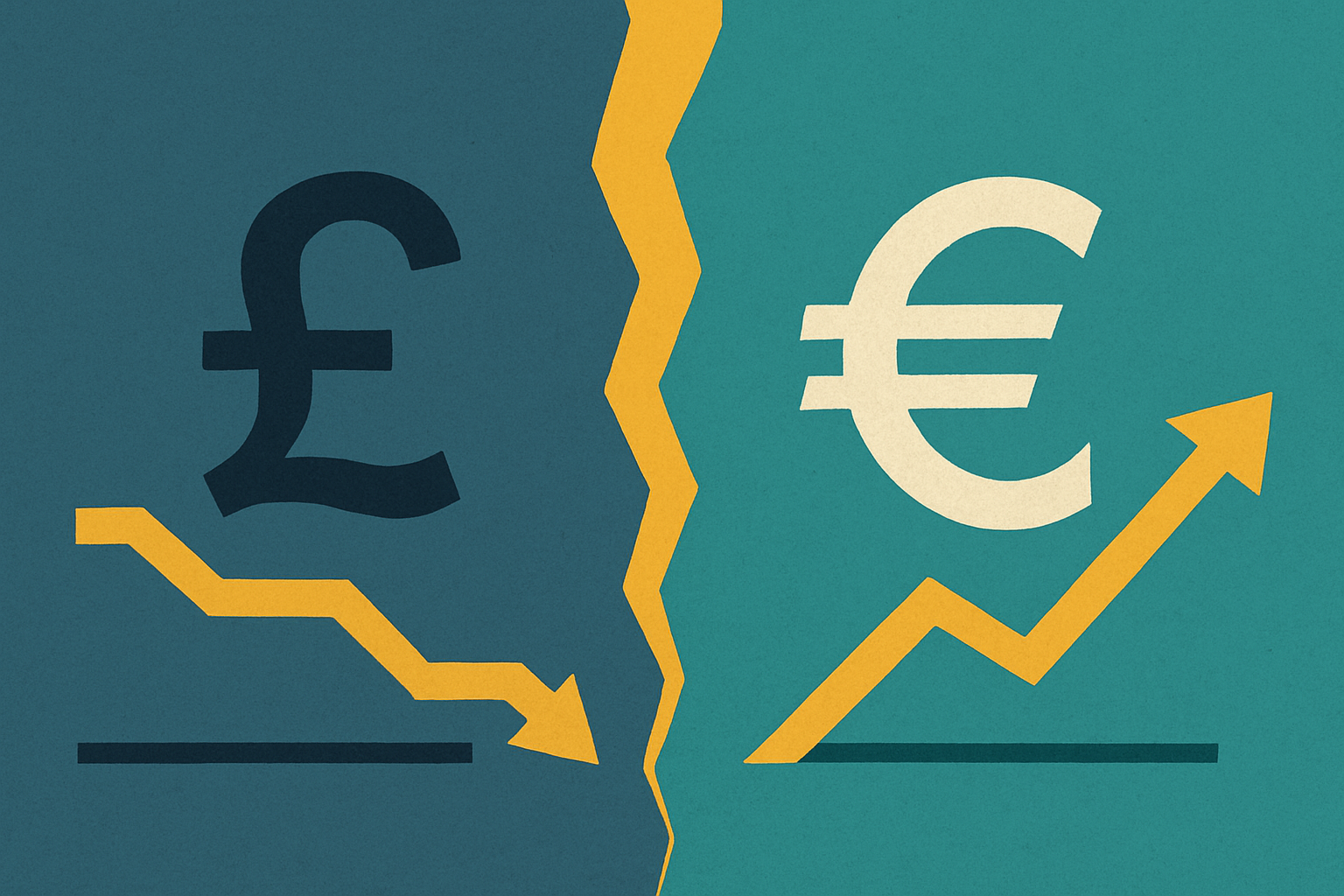Business activity in the eurozone has shown its strongest performance in more than a year with August’s composite PMI reaching 51.1, offering a tentative sign of economic stabilisation across the bloc. Yet across the Channel, the Office for National Statistics reported that one in four UK businesses still regard economic uncertainty as their greatest challenge to turnover.
The divergence is hard to ignore. While continental businesses are benefiting from renewed order books and a stronger labour market, their British counterparts remain preoccupied with costs, taxes, and subdued demand. Both regions face trade pressures, particularly from ongoing tariff disputes with the United States, yet only one appears to be finding its footing.
Order volumes within the eurozone began to expand in August after a 15-month slump, and employment has now grown for six consecutive months. Germany has led the upturn, with France finally stabilising after years of underperformance. These gains suggest that Europe’s internal market is playing a decisive role, with demand in stronger economies rippling across supply chains and offsetting weaker export flows.
That resilience comes with caveats. Companies are reporting higher input costs for energy and raw materials, which could push inflationary pressures back onto the European Central Bank’s agenda. For the moment, though, the data points to a bloc moving beyond contraction and showing early signs of sustainable recovery.
Across the UK, the mood is far less buoyant. ONS data shows that larger employers in particular are struggling with rising labour costs, and only 12% of companies expect to raise their prices in September — a sign of limited pricing power. The picture is corroborated by industry groups: the Confederation of British Industry has tracked the steepest fall in manufacturing new orders since early 2025, while the Institute of Directors reports sentiment at its lowest since 2016, with more than 80% of business leaders citing costs, tariffs, and looming tax changes as their primary concerns.
There are some visible reasons for this continental divide. Europe’s depth in manufacturing leaves it well placed to benefit from the first signs of a global rebound in goods demand, while its integrated single market provides stability when external shocks strike. Political steadiness across much of the bloc may also be helping businesses plan with greater confidence. The UK, by contrast, faces structural headwinds that limit the impact of external trade deals: a smaller industrial base, persistent labour shortages, and the lingering drag of Brexit on investor sentiment.
What these dynamics amount to is not just a gap in performance, but a divergence in momentum. In Europe, businesses are beginning to look forward — albeit cautiously — while in Britain, many are still locked in short-term problem-solving. Whether that gap widens or narrows will depend on the coming months of data, but for now the contrast is unmistakable: a continent inching toward recovery, and an island still wrestling with uncertainty.


